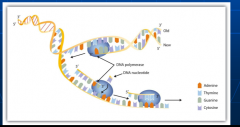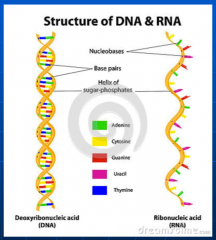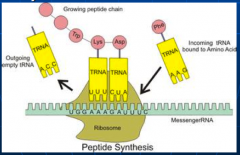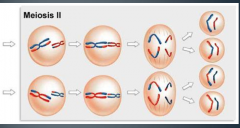![]()
![]()
![]()
Use LEFT and RIGHT arrow keys to navigate between flashcards;
Use UP and DOWN arrow keys to flip the card;
H to show hint;
A reads text to speech;
88 Cards in this Set
- Front
- Back
|
Anthropos
|
Greek for 'man' (humanity)
|
|
|
Logia
|
Greek for "study" or "study of"
|
|
|
Anthropology
|
The study of human kind, viewed from the persepctive of all people and all times
|
|
|
Cultural Anthropology
|
The study of modern human societies through the analysis of the origins, evolution, and variation of culture
Not only humans |
|
|
What does Cultural Anthropology consist of?
|
Learned behavior
Socially transmitted knowledge |
|
|
Archeology
|
The study of history or prehistoric human populations through the analysis of material remains
|
|
|
Linguistics
|
The study of the construction, use, and form of language in human populations
|
|
|
Physical Anthropology
|
Biological Anthropology
The study of evolution, variation and adaptation of humans and their past and present relatives Interdisciplinary study including: Biology, genetics, geology, ecology, etc. |
|
|
Scientific Method
|
Observation
Ask a question Formulate a Hypothesis Experiment/test Review results Conclusions |
|
|
Observation
|
Make an empirical observation about your surroundings
|
|
|
Theory
|
Not a guess
Once a hypothesis has been tested adn has not been refuted, it becomes a theory Darwin published his theory of evolution by natural selection over 150 years ago and it has yet to be rejected Very few theories become law (ie The law of Gravity) |
|
|
Evolution
|
Change in a population over time
Occurs iat the level of the population, not the individual Individuals do not evolve (we are not pokemon) |
|
|
MacroEvolution
|
An accumulation of changes over a large about of time that results in speciation
|
|
|
MicroEvolution
|
small changes that take place within a small amount of time
|
|
|
4 Causes of Evolution
|
Mutation
Gene Flow Genetic Drift Natural Selection |
|
|
Mutation
|
A change in the DNa molecule that affects an organism
DNA is the source for genetic mater and a change int eh DNA can cause a change in the synthesis of the amino acid and this can alter an organism Mutations can be beneficial, harmful, or neutral (most are neutral) but they are always RANDOM. |
|
|
Gene Flow
|
When you hear gene flow, think “migration”
The exchange of gene (alleles) b/w 2 populations |
|
|
Genetic Drift
|
Referred to as small population effect
Random change in frequency of genes in a population. The isolation of individuals occurs irrespective of the genes they are carrying The proportion of genes in the smaller group is not an accurate re of the whole population (also called sampling error) Gilligan’s Island is an example (or Swiss Family Robinson) |
|
|
Natural Selection
|
Charles Darwin theory
Organisms that are better suited to their environment live longer and produce more babies. The more babies they produce, the more “good” genes there are in the population NOT RANDOM. It is dependent on the environment and acts on random variation within the population |
|
|
Adaptatin
|
Any alteration in the structure of function by which an organsim becomes better fitted to survive and reproduce in a given environtment
Results in Natural Selection |
|
|
Population
|
Group of interbreeding organisms coexisting within a geographical range
|
|
|
Random
|
Having no recognizable pattern
|
|
|
Gene
|
Basic unit of heredity consisting of a segment of DNA arranged in a linear manner, which codes for a specific protein leading to a particular characteristic of function
|
|
|
Amino Acid
|
1 of 20 unit molecules that are common building blocks of protiens
Like words in a sentence, amino acids for the meaningful structure of proteins |
|
|
The History of DNA
|
Friedrich Miescher actually discover DNA in 1869
It wasn’t until 1953 when Watson Crick and Franklin discovered the structure of DNA, that we understood how it worked |
|
|
DNA
|
Deoxyribonucleic Acid
The source for genetic material The DNA within all cells of your body is the same |
|
|
Nucleic Acid
|
A large chemical polymer thta stores genetic info and mediates its transfer during protein synthesis
|
|
|
What Does DNA Look Like?
|
Double Helix
|
|
|
DNA is Composed of what Nucleotides:
|
Phosphate
Sugar Base |
|
|
What are the 4 Bases and Which bonds with which?
|
Adenine bonds with Thymine
Cytosine bonds with Guanine |
|
|
Purines
|
A/G
(A double ringed chemical compound) |
|
|
Pyrimidines
|
C/T
Single ring compound |
|
|
Genome
|
All genes within an organism
|
|
|
Proteins determine all physical characteristics and govern the functions of all cells, tissues, and organs
|
True
|
|
|
Each protein-generating code is a gene
|
True
|
|

Replication
|
1
DNA is “unzipped” Each strand becomes a parent template during replication 2 Exposed nitrogen bases “attract complimentary free floating nucleotides” 3 When all nitrogen bases have been paired, the DNA has been replicated. |
|
|
Gene Expression
|
Protein Synthesis
DNA itself is too large to pass through the membrane of the nucleus, so it works through RNA |
|

Differences between DNA and RNA
|
RNA is single stranded
RNA trades Thymine for Uracil RNA delivers DNA's base sequence to the cytoplasm of the cell where protiens are made 2 types of RNA: mRNA and tRNA |
|

Transcription
|
1
As in replication, an enzyme (helicase) “unzips” DNA at a specific gene 2 Free-floating RNA nitrogen bases attach to the exposed DNA bases byt the enzyme RNA polymerase, forming the strand of mRNA 3 mRNA detaches, travels outside the nucleus in to the cytoplasm DNA zips back up 4 When mRNA attaches to a ribosome, transcription is complete |
|

Translation
|
mRNA carries the "message" and translation begins at the ribosome
Ribosome molecule "moves along the mRNA strand and 'reads' the code three bases at a time: As the ribosome moves along the strand of mRNA reading each codon, it attracts the complimentary tRNA molecule (anticodon) |
|
|
Codons
|
Sequences of 3 bases
Code for specific amino acids (wheels Chart) There is also a START codon and a STOP codon |
|
|
tRNA
|
Another type of ribonucleic acid free-floating in teh cytoplasm of the cell
Consists of 3 bases (or anticodons) attatched to an amino acid |
|
|
Genotype
|
The genetic make-up of an organism
What the Genes say |
|
|
Phenotype
|
The physical expression of the genotype
It may be influenced by environment What is actually expressed |
|
|
Central Dogma
|
The idea that DNA codes for the synthesis of proteins via RNA
|
|
|
Structural Genes
|
Genes coded to produce products, such as an enzyme or hormone, rather than a regulatory protein
|
|
|
Regulatory Genes
|
Genes that determine when structural genes and other regulatory genes turned on and off for protein synthesis
|
|
|
Mitosis
|
All cells of the body undergo this process except for sex cells
Start with 1 diploid and end with 2. Exact copies Interphase Prophase Metaphase Anaphase Telophase |
|
|
Meisosis
|
Only in sex cells
Prophase I Metaphase I Anaphase I Telophase I Prophase II Metaphase II Anaphase II Telophase II |
|
|
Chromosome
|
Strand of DNA found in the nucleus that contains hundreds of thousands of genes
Humans have 46 that are arranged in 23 homologous pairs (1 from mom, 1 from dad) |
|
|
Interphase (Mitosis)
|
Normal somatic (diploid) cell in resting phase, 46 single stranded (SS) chromosomes
|
|
|
Prophase (Mitosis)
|
Chromosomes replicate so now there are 92 chromosomes, or 46 double strands
|
|
|
Prometaphase (Mitosis)
|
Microtubles attach to the centromeres
|
|
|
Metaphase (Mitosis)
|
Chromosomes align in the center of the cell
|
|
|
Anaphase (Mitosis)
|
Chromosomes are pulled apart
|
|
|
Telophase (Mitosis)
|
Cell begins to divide
|
|
|
Cytokinesis (Mitosis)
|
Cell division is complete
There are now 2 daughter cells identical to the parent cell They are diploid |
|
|
Meiosis
|
A process of cell division that occurs only in the sex cells, or gametes
Begins with a diploid but results in a haplod Does not result in an identical daughter cell It is the cause of the inheiritance of biological characteristics and the variation seen in offspring of sexually reproducing organisms |
|
|
Haploid
|
A cell that has a single set of unpaired chromosomes, half of the genetic material
|
|
|
How many sperm are produced during meiosis?
|
4
|
|
|
How many eggs are produced during meiosis?
|
1
|
|

Prophase 1
|
Chromosomes replicate
There are now 42 DOUBLE STRANDED chromosomes This is when the recombination of genes takes place |
|
|
Recombination of genes
|
The homologous pairs of chromosomesexchange parts
|
|
|
Metaphase 1
|
Instead of the chromosomes lining up 1 by 1, he line up in homologous pairs
|
|
|
Anaphase 1
|
Instead of chromosomes splitting at the centromere and half going to each new cell, the homologous PAIRS separate. Maternal chromosome (with some paternal traits) goes t one side, and the paternal match (now with some maternal traits) goes to the other side./
|
|
|
Telophase 1
|
The cell undergoes first division, resulting in 2 daughter cells, each with 23 double stranded chromosomes
|
|
|
Prophase 2
|
microtubles attach to the centromeres
|
|
|
Metaphase 2
|
Chromosomes line up in the center
|
|
|
Anaphase 2
|
Chromosomes are split at the centromeres and are pulled apart to each side of the cell via the microtubules (or spindles)
|
|

Telophase 2
|
The cell devides, producing haploid cells, or cells with 23 single stranded chromosomes
|
|
|
Allele
|
Alternative form of a gene at a locus
|
|
|
Locus
|
The physical space occupied by a gene on a chromosome
|
|
|
Sex Cell
|
Gamete, haploid, the end product of meiosis
|
|
|
What Darwin DIDN'T know:
|
How are traits inherited?
Why are organisms different? |
|
|
Inheritance of Acquired Traits
|
Lamarck
Phenotypic modifications arise solely through environmental influences on the developmental process of an organism such characters can be passed down to the next generation |
|
|
August Weisman
|
Cut off mouse tails to see if their offspring would be tailless. They were not. He was cruel.
|
|
|
Blending Inheritance
|
heritable traits blend together when they're passed on
|
|
|
Pangenesis
|
Darwin's idea of Inheritance
All cells contain an organisms traits in heritable particles called gemmules |
|
|
Gregor Mendel
|
The Pea Guy
Studied phenotypic variation in thousands of pea plants Published Experiments on PLant Hybridization |
|
|
Monohybrid cross
|
Cross between parents that differ in one character
This single trait is coded for by 2 different alleles, one from mom and one from dad |
|
|
Heterozygous
|
2 different copies of an allele
|
|
|
Homozygous
|
2 copies of the same allele
|
|
|
Dominant
|
Only one allele needed to be present
|
|
|
Recessive
|
Both alleles must be present
|
|
|
Law of Segregation
|
2 alleles that represent each gene must separate in the gametes, so that each sex cell ony has one allele for each gene
|
|
|
Law of Independent Assortment
|
Inheritance of one trait does not affect the inheritance of other traits
|
|
|
Mutationism
|
Mutations in genes were the source of all new variation but they did not think natural selection was the driving force of evolution
read between the lines |
|
|
Gene Pools
|
No specific genotype or phenotype for species
|

